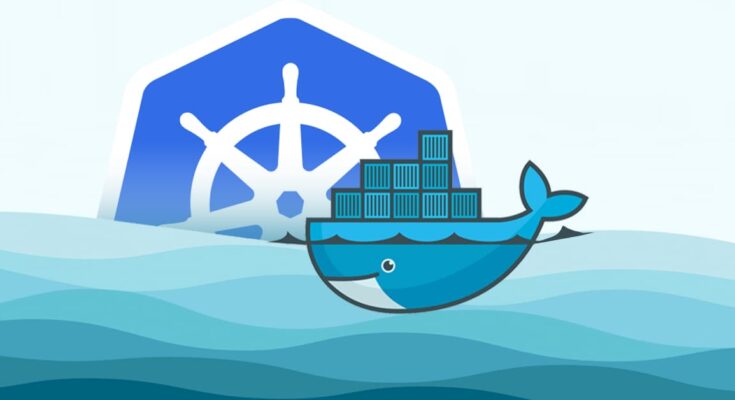Kubernetes is an extensible, portable, and open-source platform for managing the containerized services and workloads. Hence, Kubernetes facilitates both – Automation and Declarative configuration. The ecosystem of Kubernetes is rapidly growing, and there’s no coming back. The service, tools, and the support of Kubernetes is available widely. The word Kubernetes comes from a Greek origin, which means a pilot or helmsman. The project Google made Kubernetes an open-source in 2014. Kubernetes has been running production workloads at scale with over 15 years of experience in Google. From the community, Kubernetes provides the best of its kind practices and ideas. The Kubernetes training gives a brief overview of Kubernetes.
Looking back in time
There have been three eras—the traditional deployment era, virtualized deployment, and container deployment. Looking back into these eras will help us to understand why Kubernetes is so useful.
- Traditional deployment era: Earlier, organizations used to run the applications on physical servers. In the physical servers, there were no options to define the resource boundaries for the applications. This condition is used to cause resource allocation issues. It can be explained in terms of this example: If a physical server runs multiple applications, there certainly can be chances in which one of the applications used to take up almost all resources. As a result of this, other applications are used to underperform. As a solution to this, each application could be run on different physical servers. However, it wasn’t a great idea as maintaining these many physical servers would have been expensive for the organizations, and also the resources were left underutilized.
- Virtualized deployment era: As a solution to the problem and limitations mentioned in the traditional deployment era, virtualization was introduced. Multiple Virtual Machines (VM) were allowed to be run on a CPU of a single physical server. The applications were isolated between these Virtual Machines, and the information in one of the applications cannot be accessed by any other application quickly. Hence, it also provides a level of security. Virtualization allows better scalability and enables the resources to in physical servers to be utilized better. It is because an application can be easily added or updated. This reduces the hardware cost much more than before. One can also present a cluster of disposable virtual machines for a set of physical resources. On top of the virtualized hardware, each virtual machine would run all the components, including its operating system, as a full machine.
- Container deployment era: If you want to share the operating system among the applications, containers have relaxed isolation properties. Containers are almost similar to Virtual Machines. Due to this reason, the containers are supposed to be lightweight. Just like a virtual machine, a container has its own process space, CPU, filesystem, memory, and much more. They are portable across OS distributions and clouds since the containers are decoupled from the underlying infrastructure. Kubernetes training enhances the Kubernetes skills required to add credibility to the field.
Need of Kubernetes
Containers are an excellent way to bundle your application and run it. It would help if you managed the containers in the production environment, which runs the applications and ensures no downtime. For example, another container needs to start when a container goes down. It would indeed be more comfortable if a system handled this situation. That’s when Kubernetes comes into the picture. To run distributed systems resiliently, Kubernetes provides a framework. The scaling and failover are looked after by Kubernetes, and it includes deployment patterns and much more.
Provisions from Kubernetes
Kubernetes provides the following:
- Service discovery and load balancing: Using a DNS name or their IP address, Kubernetes can expose a container. Kubernetes balances the load and distributes the network traffic to stable the deployment when traffic to a container is high.
- Storage orchestration: Storage systems like local storage, public cloud providers, etc. are allowed to mount automatically by Kubernetes.
- Automated rollouts and rollbacks: Using Kubernetes, you can describe the desired state for your deployed container. At a controlled rate, Kubernetes can change the actual state to the desired state.
- Automatic bin packing: To run containerized tasks, Kubernetes provides a cluster of nodes to be used. The Kubernetes need to know how much memory (RAM) and CPU does each container need. To make the best use of your resources, Kubernetes can fit containers onto the nodes.
- Self-Healing: Kubernetes replaces the containers, restarts the containers which fail, kills the container which doesn’t respond to health checks. All of this is not advertised to the client unless it is ready to serve.
- Secret and Configuration Management: Kubernetes allows us to store and manage pieces of information that are sensitive, such as OAuth tokens, passwords, and SSH keys. You can update and deploy secrets. And without rebuilding the container image and exposing secrets in the stack configuration, you can also update application configuration.
Popularity of Kubernetes
Kubernetes is popular due to the benefits like:
- Agile application creation and deployment.
- Continuous development, integration, and deployment.
- Dev and Ops separation of concerns.
- Observability surfaces not only application health and other signals but also OS-level information and metrics.
- Environmental consistency across testing, development, and production: Runs the same on the cloud as it does on the laptop.
- Cloud and OS distribution portability – Runs on RHEL, Ubuntu, CoreOS, on major public clouds, on-premises, and anywhere else.
- Application-centric management.
- Loosely coupled, distributed, elastic, liberated micro-services.
- Resource isolation: the application performance is predictable.
- Resource utilization: High density and efficiency.
If you are preparing for the CKA exam, you need to enhance your skills, which adds credibility. The Certified Kubernetes Training for Administrator, founded by the Cloud Native Computing Foundation (CNCF), will make it easy for you. This Kubernetes Training allows you to work on 11 real-life projects. It provides 50 hours of blended learning and covers the essential skills like Kubelets, KubeAPI server and scheduler, Scheduling pods, Storage and volumes, Logging and monitoring clusters, Security and authentication, Application lifecycle management, DNS Networking CoreDNS CNI, Application failures, Network failures, Control panel failures.




